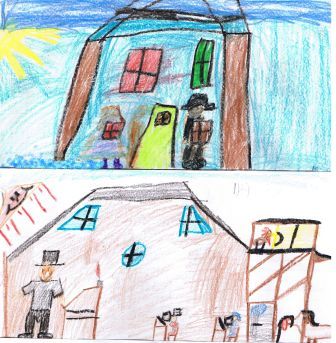 Dr. Robert Rheault has a shellfish farm called Moonstone Oysters near Point Judith. Also president of the East Coast Shellfish Growers Association and secretary of the Ocean State Aquaculture Association, he is committed to promoting public education about aquaculture.
Dr. Robert Rheault has a shellfish farm called Moonstone Oysters near Point Judith. Also president of the East Coast Shellfish Growers Association and secretary of the Ocean State Aquaculture Association, he is committed to promoting public education about aquaculture. 
His enthusiasm captivated South Kingstown's 1st through 5th graders last fall. One would never have guessed that this young audience, unlike his customary graduate students and members of Congress, had drawn beads of sweat across Bob’s
 brow during his many hours of preparation.
brow during his many hours of preparation.
 improves species diversity, serving as artificial reefs where juvenile fish and crustaceans can live, find food and refuge, and breed.
improves species diversity, serving as artificial reefs where juvenile fish and crustaceans can live, find food and refuge, and breed.
 million gallons. They also remove nitrogen, lower bacterial counts, improve water clarity, and diminish algal blooms. And they filter silt from the water—better light penetration helps oxygenate deeper water and can improve eelgrass survival.
million gallons. They also remove nitrogen, lower bacterial counts, improve water clarity, and diminish algal blooms. And they filter silt from the water—better light penetration helps oxygenate deeper water and can improve eelgrass survival. 


 spring, “My Environment” will focus on natural processes and local flora and fauna.
spring, “My Environment” will focus on natural processes and local flora and fauna. 



By Rian Smith



